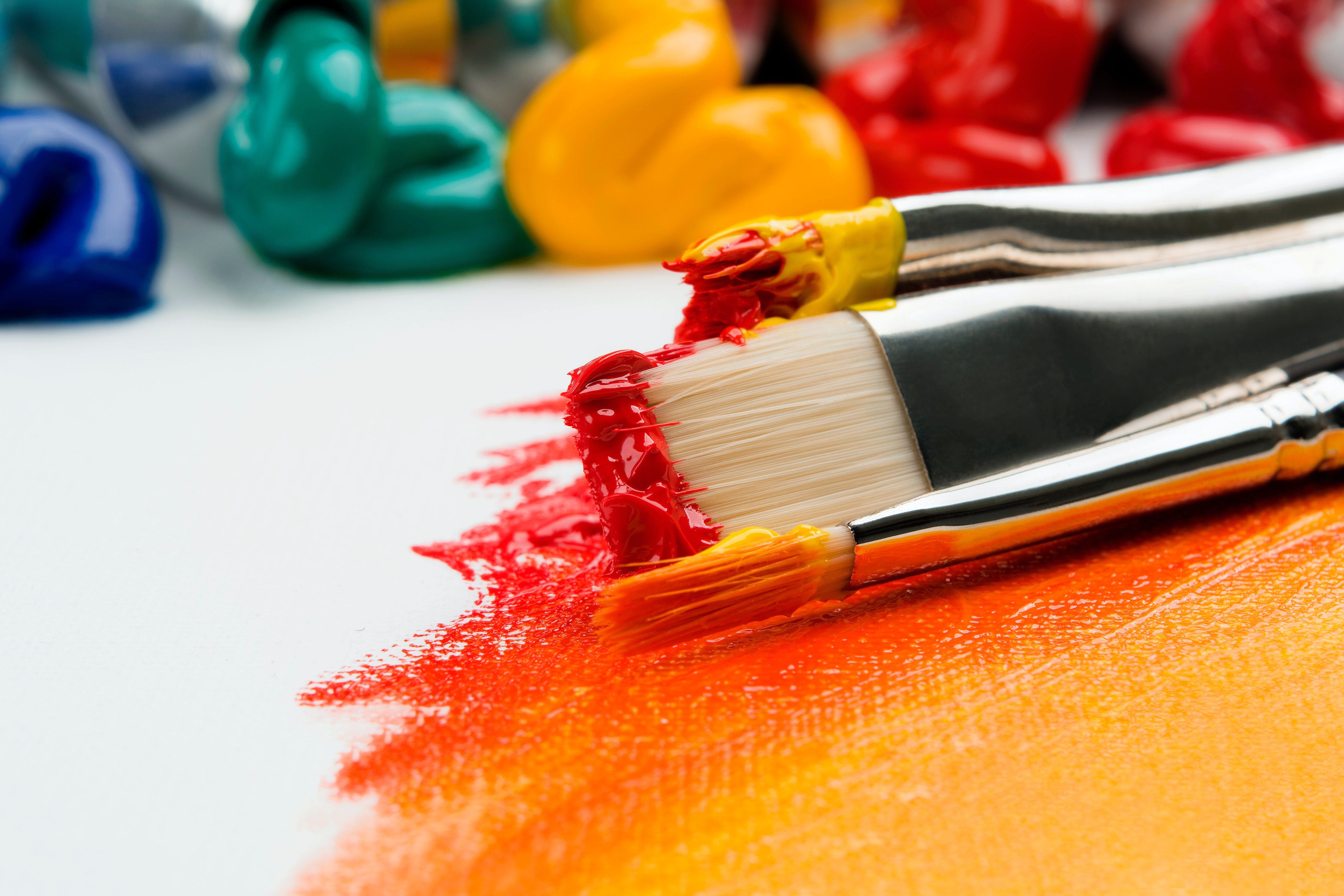To varnish or not to varnish? That is the question.
Deciding whether or not to apply varnish to an oil painting can be an uncertain experience at best, and a terrifying or devastating experience at worst. Our aim is to simplify the options and help you establish what is the best finishing process for your oil painting (if any!).

Oil painting before ....& after varnishing.
Why Varnish?
Varnish protects a painting's surface from all kinds of environmental damage and also serves to even-out the painting’s final appearance, making it all equally glossy/matte, and saturating any dull, dead spots. As oil paintings dry, the dark colors have a tendency to ‘sink in’. Varnish brings out the rich colors and the brilliance they had when you first applied them.
What Does Removable Mean?
Over time, all sorts of pollutants (such as dirt, dust, UV damage, and smoke) will affect the varnish layer rather than the painting. When the time comes, the painting can be taken to a conservator and the varnish itself can be removed safely and re-applied, leaving the painting looking as good as new (even hundreds of years later). So, if your bottle of varnish says "Removable", it's a good thing, and the sign of a professional quality product.

This Rembrandt painting is in the restoration process. Stained and cracked varnish is being removed revealing stunning original colours and details.
What are the Different Kinds of Varnish?
At the risk of oversimplifying, varnish can be broken down into two categories: Permanent and Temporary (... also referred to as Picture and Retouch)
Picture/Permanent Varnish:
- permanent & long term protection
- generally removable for conservation purposes
- provides thick protective film
- available in Gloss, Satin, or Matte
- can be applied only when paint is dried & cured (2 months -2 years)
- slower drying/curing
There are also two types of Picture varnish: Natural and Synthetic. Most modern natural varnish is made from Damar Resin (a.k.a. Dammar - hardened tree sap) whereas synthetic varnishes tend to be petroleum based. Damar tends to dry very quickly to a harder, more brittle finish (ideal for working on wood panel), and has a pale yellow-ish hue to it naturally. Synthetic varnishes are slightly slower to dry and cure, but will remain crystal clear (non-yellowing) and provide a more flexible film that is ideal for stretched canvas.

Damar resin crystals
Retouch/Temporary Varnish:
- permanent but not intended as a long term finish
- easily removable for conservation purposes
- provides thin semi-protective film
- available only in Gloss
- can be applied when painting is "touch" dry (1-2 weeks)
- fast drying/curing ...very fast
Retouch varnish is an extra-thinned Damar solution which serves double duty as both a final varnish and a "re-workable" middle layer (applied during the painting process to resurrect dead spots that are interfering with the artists ability to see the picture as a whole). Once Retouch Varnish is applied and has dried, the full surface of the painting will be at the same sheen which makes it much easier to see which areas need to be re-worked.

When is it Safe to Apply Varnish?
It can take 6 months to a year or longer for an oil painting to completely dry and cure... This presents a host of problems as most artists don't hang on to their paintings for that amount of time. This is where the Retouch comes into play... If there is a deadline that doesn't allow for the painting to dry for a year, Retouch varnish is the best solution. The painting will be able to be handled and packaged safely plus it will provide an even sheen over the surface. Retouch will protect the painting well enough until it cures completely and a proper Picture Varnish can be applied, in this case it's a better option than no varnish at all!
Why Would I Choose Not to Varnish?
Metallics or Interference Colours:
If you are using these colours, don't varnish (this applies to acrylic paintings as well). The characteristic sparkle of metallics and the opalescence of interference colours, both are dependent on the way light refracts off the paint and hits your eye. By putting a clear film between the paint and your eye it severely muffles the effect.
Persistent Dull Spots:
Although Retouch varnish will help with superficially dull areas of your painting, the source of the dullness needs to be addressed to find a permanent fix. When darker colours become deep and dull it's referred to as "sunk-in". There are 3 basic reasons why this may be happening:
- too absorbent of a substrate (improperly primed or unprimed surface, or using a cheap gesso can cause this)
- the use of too much thinner
- not enough use of an oil medium
Before turning to varnish as the solution, try a technique called "oiling-out". Lay the painting horizontally and apply a generous layer of linseed, walnut oil, or painting medium of your choice to the entire surface, let dry and repeat until the whole surface maintains a uniform sheen when dry.
Applying varnish doesn't have to give you nightmares. Rest assured that if you've done your homework, allowed enough time, and are using the correct materials, even the worst varnish disaster is removable.

A portrait of the Madonna and Child before and after restoration. The cracking and discoloration existed within the varnish layer only, and once removed, the painting looks like new again.





